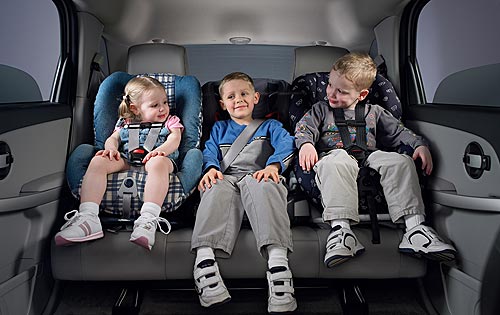
Did you know that the leading killer of children in the United States between the ages of one and 13 is fatal car accidents? Unfortunately, most of these deaths could have been prevented with proper car restraint. Before you load up your most precious cargo, ensure they’re properly restrained to prevent injuries–or worse.
[Tweet ” The leading killer of kids in the US ages 1-13 is fatal car accidents. Get safety tips at”]
Read Your Car Seat’s Manual
Before you bring your little bundle home from the hospital, ensure you’re reading your car seat’s manual before you even put it in the car. Most car seat installations are done incorrectly just because the owners didn’t read the manual. It’s only a few pages and only takes a few minutes. Those minutes could save your baby’s life.
Harness Your Child Properly
One of the biggest mistakes in car seat safety is improperly harnessing your kids. Children that are still rear facing should have their harness straps at or below shoulder height, while forward facing kids’ straps should be at or above their shoulders. Chest clips should always be at armpit level, and the harness should be tight enough that there is no slack available at the shoulders to pinch any.
Don’t Put Coats on Your Kids
No, your child won’t freeze this winter. Puffy winter coats require you to release your child’s harness straps. If you removed the coat and put them back in the car seat after loosening the straps, they would be too loose to be remotely safe. Instead, warm the car up ahead of time and cover them with a blanket once they’re safely harnessed.
Keep Your Child Rear Facing as Long as Possible
Just because they’re one year old and over 20 pounds doesn’t mean your child needs to be forward facing. The safety of rear facing lies in physiology. Until a child is four years old, their spines aren’t ossified (or hardened). With a very large head size to body size ratio, an accident can cause internal decapitation in a toddler or baby. Instead, aim to keep them rear facing until they’re at least three years of age.
Use a Booster Seat
Booster seats don’t typically fit a child until they’re at least 4’9″. The seat belt should easily sit on their hips, not across their belly (which can cause internal injuries in an accident), and the child should be able to sit upright without slouching to the side.
Don’t Give Them Hard Objects
In the case of an accident, seemingly innocuous objects like cups and books can cause severe facial injuries. Let them have soft toys instead and entertain them with songs, games, and a built-in DVD player if you have one in your vehicle.
Car safety is probably the most important way to protect your child. Vehicular injury can be some of the most damaging and long lasting, so if despite your efforts your child is injured, the phones at Robert H Littlejohn are always waiting.
Mixing kids and cars doesn’t have to mean danger – but it certainly can! Do you have any safety tips to add?


